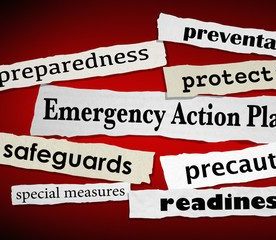From forest fires to hurricanes, from major flooding to non-potable water sources, many of our communities have encountered emergencies in the past year, and that is barring the pandemic. Health Care Organization Emergency Management Incident Command Teams have stood up each time to protect their campuses, patients, and communities. The Joint Commission Emergency Management Standards have existed for many years, and pre-pandemic, discussions began about revising them. Enter the Covid-19 pandemic and like so much other work, this project was delayed. However, in 2021, The Joint Commission refocused their resources and set forth revisions to the Emergency Management Chapter. In reviewing the chapter, it appears much of the work was in re-organizing the existing standards for better flow, and solidifying some of the other core principles that reside within the other chapters of the accreditation manual.
After examining the Emergency Management Standards there are elements we wish to draw your attention to that now reside in the chapter, and a few related components we believe are not included in the chapter rewrite.
Embedded within the chapter expectations is the requirement to have an Emergency Management Committee that oversees the establishment of the Emergency Management Plan, education and training program for Emergency Management, and requires the designation of a Qualified Emergency Management Coordinator. Qualifications are then further defined as education, training, and experience in Emergency Management. Additional responsibilities of the Emergency Management Committee include development of the organizations Hazard Vulnerability Analysis (HVA). The purpose of the HVA is to guide the organization in ensuring a state of readiness for the types of Emergency Management events that are most probable to occur at or near the organization. The Emergency Operations Plan then is designed to outline how the organization will function within the 6 critical areas of:
- Communications
- Staffing
- Patient Clinical and Support Activities
- Safety and Security
- Resources and Assets
- Utilities
An area that is newer to the Chapter is the expectation that organizations establish a crisis standards of care plan. Crisis Standards of Care processes have existed for years, but the 2019 pandemic brought them front and center as our health care systems struggled to meet patient’s needs. Your Crisis Standards of Care plan requires development amongst your leadership, medical staff, and legal counsel resources, as the concept of crisis standards of care are based upon the rationing of healthcare resources. Organizations should look for guidance from their State Department of Health before developing their internal plan.
The Emergency Management Chapter continues to provide expectations for the committee to operate within the Performance Improvement structure established by the organization. This means that the committee needs to be monitoring key indicators, analyzing the data, and then taking action to make improvements. With Emergency Management, much of the improvement work will come from the organization’s After-Action Report. The After-Action Report is, in many ways, a root cause analysis of the entire Emergency Management team’s response to a specific event. During the After-Action activity, the committee and others provide vital feedback on what worked well and what did not work during the event. Often, the organization will also have data available such as burn rates for certain supplies and/or equipment, staffing resource numbers, and turn-around times for certain events or processes, to name just a few.
The Emergency Management Chapter rewrite is a helpful improvement. Additionally, there are two federal reports issued in June and September of 2021, that address the Hospital Preparedness.
The first Office of the Inspector General report, “CMS’s Controls related to Hospital Preparedness for an Emerging Infectious Disease” which was released in June 2021, identified that the CMS controls were well-designed and implemented but the authority which resides with CMS is not sufficient for it to ensure preparedness at accredited hospitals. This OIG report advises that CMS requested Accrediting Organizations to conduct special-targeted infection control surveys, but these AOs did not conduct such surveys. As a result, State agencies conducted these surveys at about 13% of accredited hospitals, but due to CMS’ limited oversight of accredited hospitals, 13 states were unable to conduct such surveys. As a result, the OIG recommends that new Participation Requirements be authored that require accrediting organizations to conduct surveys during a public health emergency to address the risks presented by the emergency.
The second report issued by ASPR-Tracie in September 2021 was entitled “The Effect of Covid-19 on the Healthcare Incident Command System”. ASPR-Tracie is operated by the Health and Human Services branch of the Federal government and serves as a gateway to Emergency Preparedness resources for health care entities. Their September report focuses organizations on several key functions, that are also covered in The Joint Commission Emergency Management Chapter rewrite. However, there is one area that is absent from The Joint Commissions rewrite that is identified by the ASPR-Tracie report. This area, often a key component in High Reliability discussions or resources is resiliency, and specifically the mental resiliency needed to remain nimble, flexible and responsive as needed by the organization. This resiliency also includes recognizing and developing means of promoting staff resiliency while confronted with staff burnout and access to smaller pools of human resources. We anticipate that The Joint Commission will add additional requirements either into the proposed changes or will recommend additional changes to address these areas in the next revision.
Stay tuned to the Courtemanche & Associates newsletters for future information on the Participation Requirement changes and for the next release of The Joint Commission Emergency Management Standards.


